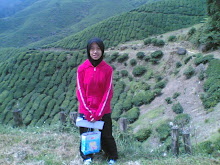
The Malays are the people who inhabit the Malayan Peninsula and some of the nearby islands, including the east coast of Sumatra, the coast of Borneo and smaller islands that lie between the area. These tribal proto-Malays were a seafaring people. Present day Malays of the Peninsula and coasts of the Malay Archipelago are "anthropologically described as deutero-Malays" and are the descendants of the tribal proto-Malays mixed with modern Indian, Thai, Arab and Chinese ancestry. Malay culture itself has been strongly influenced by that of people of neighboring lands, including Siamese, Javanese, Sumatran and Indians. The influence of Hindu India was historically very great, and the Malay people were largely Hinduized before they were converted to Islam in the 15th century. For 2000 years, the traffic of traders between the Malayan Archipelago and India resulted in frequent intermarriages especially Tamils and Gujeratis. Some Hindu rituals survive in Malay culture, as in the second part of the marriage ceremony and in various ceremonies of State. Malays have also preserved some of their more ancient beliefs in spirits of the soil and jungle, often having recourse to medicine men called bomohs [shamans] for the treatment of ailments.
In the northern states of Perlis and Kedah, intermarriages with Thais were commonplace. The east coast state of Kelantan still has traces of Javanese culture that date back to the era of the Majapahit Empire of the 14th century. The Sumatran kingdom of Acheh dominated Perak for over a century. The Bugis from Indonesia's Celebes Islands colonized Selangor and fought for rulers in States along the length of the peninsula - from Kedah to Johor. The Minangkabaus from Sumatra had their own independent chiefdoms in what is today the state of Negri Sembilan. This mix of different ethnic groups form what is the modern Malay and can be clearly seen in the lineage of, for example, Malacca's royalty. Sultan Muhammad Shah married a Tamil from South India. Sultan Mansur Shah married a Javanese, a Chinese and a Siamese; the Siamese wife bore two future Sultans of Pahang. It was this diversity of races, cultures and influences that has the given the modern Malay race the rich and unique historical heritage it has today.
This rich historical heritage has evidently resulted in it's exotic cuisine. In Malay cuisine fresh aromatic herbs and roots are used, some familiar, such as lemongrass, ginger, garlic, shallots, kaffir limes and fresh chilies. Both fresh and dried chilies are used, usually ground into a sambal or chili paste to add hotness to dishes. There are however, less commonly known herbs and roots that are essential in Malay cooking; such as daun kemangi [a type of basil], daun kesum [polygonum, commonly called laksa leaf], bunga kantan [wild ginger flower buds or torch ginger], kunyit basah [turmeric root], lengkuas [galangal] and pandan or pandanus [screwpine leave].
Dried spices frequently used in Malay cooking are jintan manis [fennel], jintan putih [cumin] and ketumbar [coriander]; Other dried spices used are cloves, cardamom, star anise, mustard seeds, fenugreek, cinnamon and nutmeg. Both fresh and dried ingredients are frequently used together, usually ground into a rempah ['spice paste]. The rempah is then sautéed in oil to bring out it's flavorful aroma and toasted goodness. Santan [coconut milk] is the basis of Malay lemak dishes. Lemak dishes are typically not hot to taste; it is aromatically spiced and coconut milk is added for a creamy richness [lemak]. Assam Jawa, or tamarind paste is a key element in many Malay assam dishes for adding a sour or tangy taste; especially for fish and seafood dishes. What is tamarind paste? Tamarind paste is the pulp extracted from tamarind pods commonly used as a souring ingredient in Latin America, India, Africa and Asia. While the prime taste is sour, the underlying tang is slightly sweet, reminiscent of dried apricots or dried prunes. The pulp or paste is commonly sold in the form of a semi-dry flat block. To use, simply pinch a small lump from the block and soak it in some warm water. Use your fingers to squish it about in the water to separate the seeds and fibers; the resulting paste or tamarind water is used for cooking.

No comments:
Post a Comment